I recall watching an advertisement on TV that was promoting a brand of milk that is enriched with calcium and vitamin D. The advertisement had a provoking animation of a woman, stooping gradually, as she gets visibly older. The message was that aging adults need higher intake of calcium and vitamin D to maintain strong and healthy bones – and their milk was the solution. Or is it?
We know that our bones tend to become more fragile as we age. A proper name for this condition is called osteoporosis. But many of us are probably not aware that women are at a higher risk of developing osteoporosis, compared to men.
What is osteoporosis?
Osteoporosis is a condition in which the bones become thin, brittle, and weak mostly at the hips, spine and wrist. These changes can increase the risk of fractures, especially when we fall. According to the American College of Obstetricians and Gynecologists (ACOG), osteoporosis occurs 5 times more often in females than males. Women also lose bone density more quickly after menopause, because of lower estrogen levels. The risks of developing osteoporosis can further increase due to lifestyle factors such as smoking, high alcohol or caffeine consumption, poor diet and lack of exercise. A complete list of other risk factors can be found here.
Symptoms of osteoporosis are not apparent, until it is too late. This is why it is recommended that women aged 65 years or older should have a bone density test Women who are younger than 65 years and past menopause should have a test if they have had a bone fracture because of fragile bones or have other risk factors for osteoporosis.
The difference between osteopenia and osteoporosis When you perform a bone density test, you will be given a T-score, that will determine if you have a stronger, or weaker bone of an average 30-year-old woman. If the T-score at any site is -1 to -2.5, you have a low bone mineral density and are at increased risk of osteoporosis, a.k.a osteopenia. A score of -2.5 or lower means that you have osteoporosis. Simply put, osteopenia is on the way of becoming osteoporosis. But it’s now known even at this stage, it is still possible to slow down bone loss, and can even be reversed!
Overcoming weak bones
If you’re diagnosed with osteopenia, your physician may recommend medication, hormone therapy, supplement or a lifestyle modification. Increasing your intake of calcium, magnesium and vitamin D can help slow down the process. In addition to nutrition, physical exercise matters too. For instance, you need to consume protein-rich foods to promote muscle synthesis. But if your muscle tissues are not sufficiently challenged, it is pointless. The same principle applies to building bone density. However, when it comes to exercise for bones, not all are equivalent. Many researches suggest that weight-bearing exercise is essential and an effective means to battle brittle bones.
Exercises you can do safely at home
When it comes to exercises for osteopenia, or osteoporosis for that matter, fall prevention is at its utmost importance. Even though if bones do not break after every fall, the person who has fallen and broken a bone nearly always becomes fearful of falling again. As a result, she or he may limit activities for the sake of “safety”, thus causing a downward spiral effect towards their health.
This is followed by weight-bearing strength exercise, and gentle impact-based activities such as walking, jogging or hiking. While swimming and cycling may help your heart and build muscles, they don’t build bones.
Here are 7 simple exercises that can help improve your balance, build muscle strength and bone density from home.
HEEL DROP
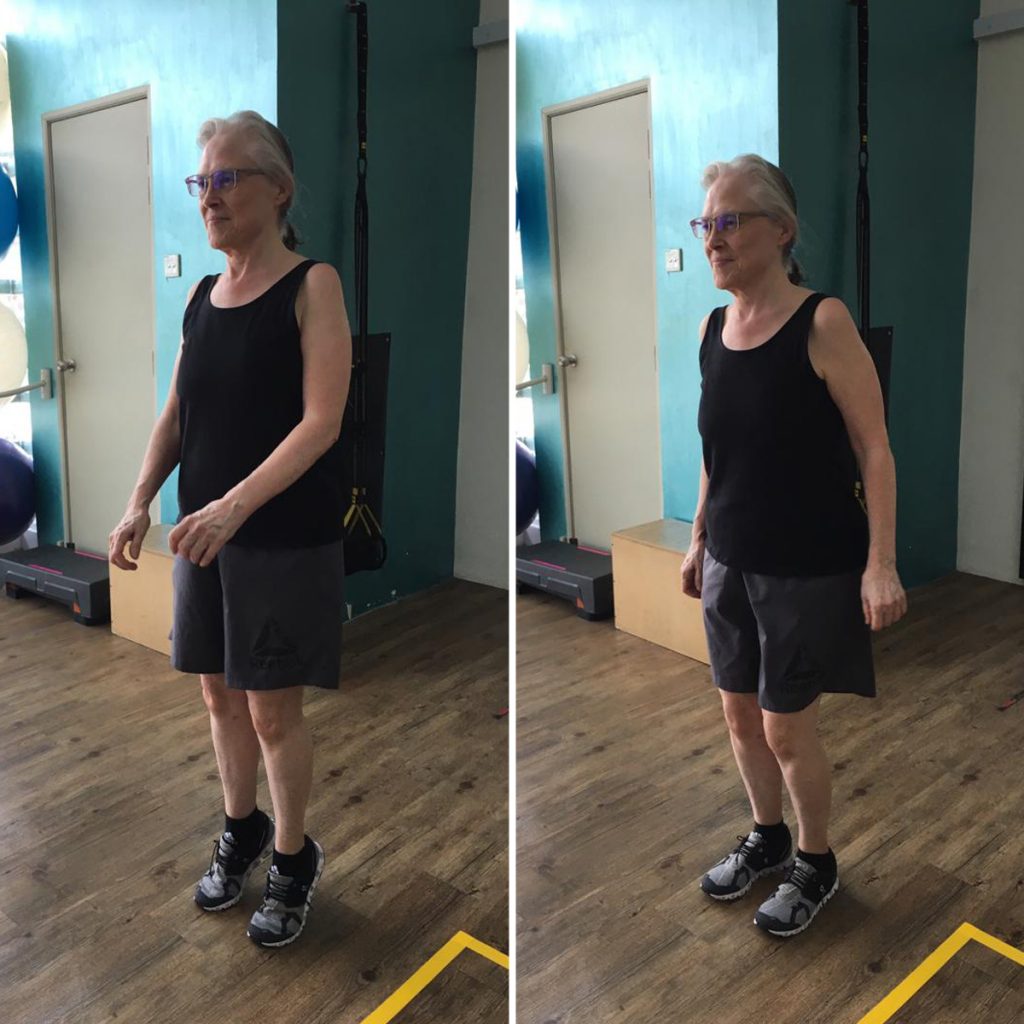
CLAM-SHELL
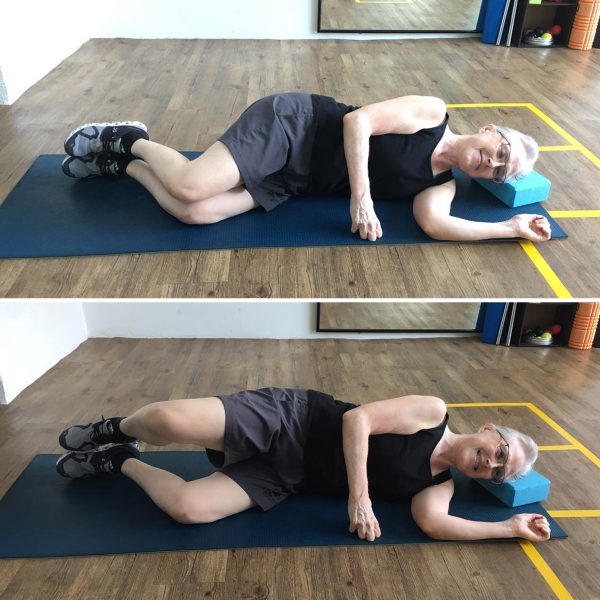
Tips: This exercise helps activate and strengthen your glutes to provide stability at your hips.
GLUTE BRIDGE
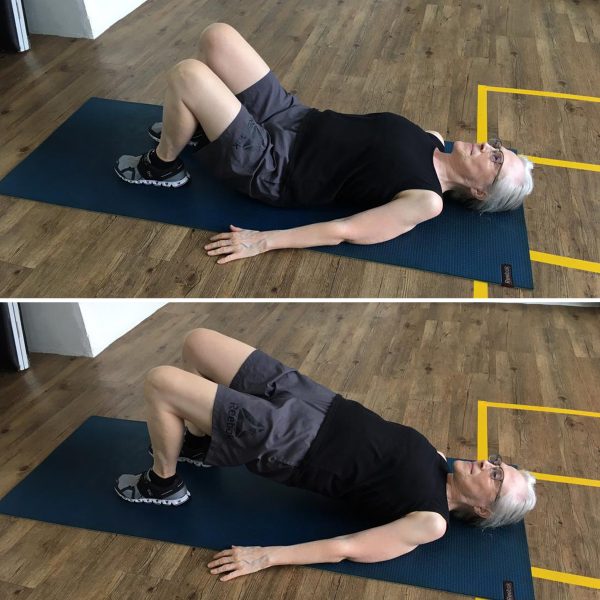
Tips: This exercise targets your glutes to strengthen the muscles at your hips, core and knee.
BIRD-DOG
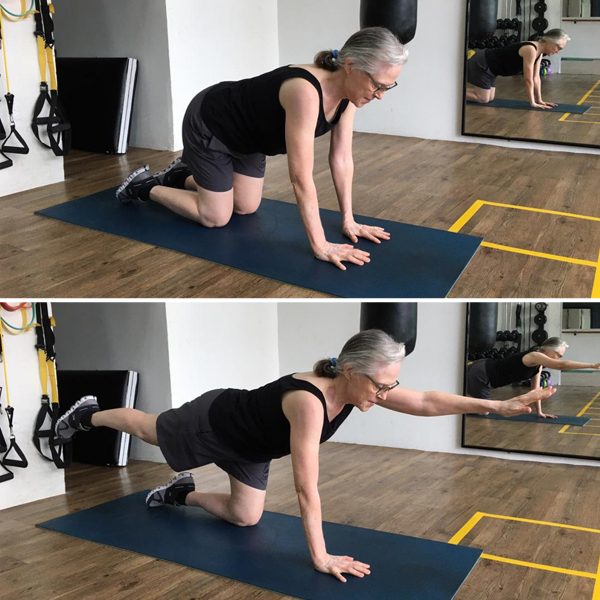
Tips: Improve your hip and shoulder stability with this exercise. Remember to maintain a neutral spine throughout the movement by engaging your core.
STANDING MARCHES
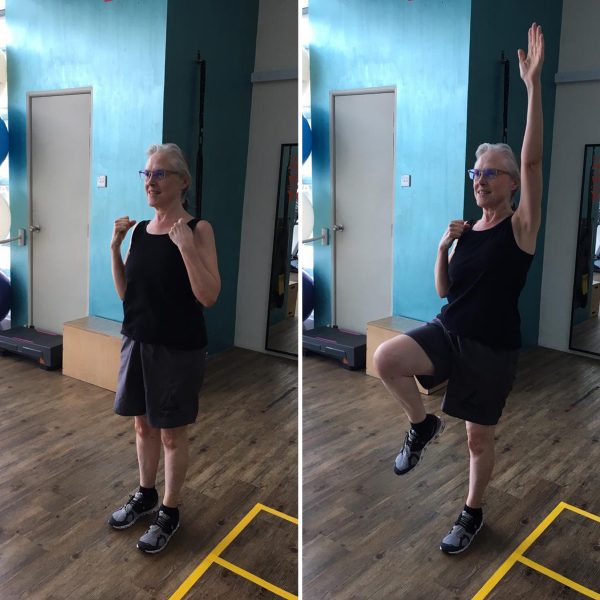
Tips: This exercise challenges your co-ordination and balance.
SUPPORTED SQUATS
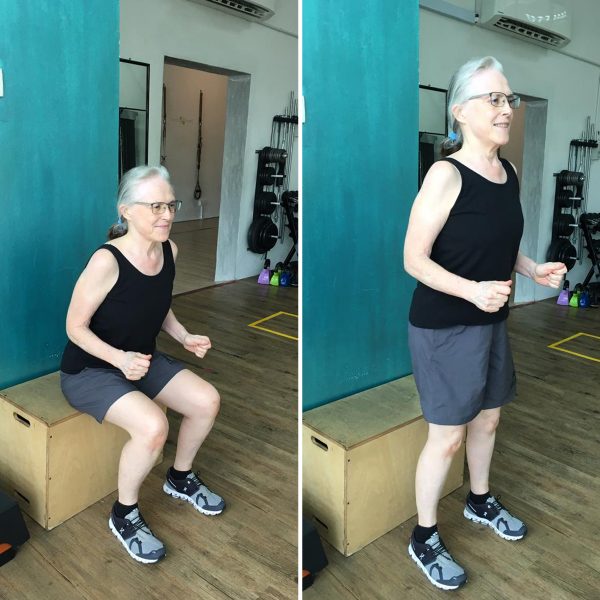
Tips: This simple body weight exercise strengthens your knees and glutes.
KNEELING BICEPS CURL
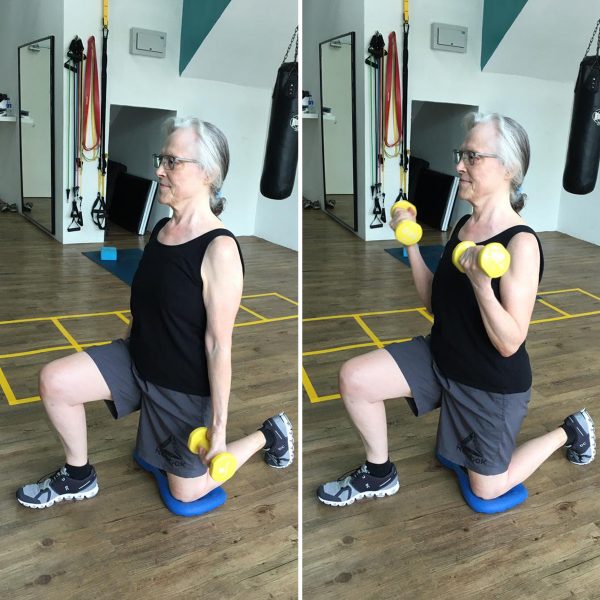
Tips: This exercises challenges your balance and strengthens your arms and wrist. Remember to use a cushion to protect the knee.
The benefits of strength training are not limited to healthy bones and strong muscles. It also helps with weight control, manages chronic diseases and improves your mood too! It will be helpful to collaborate with your healthcare provider and an exercise professional to get the most out of your condition. It is also recommended that your strength training program is conducted under supervision by a qualified exercise professional. This is to be certain that you’re using the right technique to minimize injury and optimize load for maximum results.
MedFit Network has a list of qualified healthcare professionals across the globe for you to engage with.
Ke Wynn Lee is an author and an international award-winning corrective exercise specialist currently owns and operates a private Medical Fitness Center in Penang. Apart from coaching, he also conducts workshops and actively contributes articles related to corrective exercise, fitness & health to online media and local magazines.
References
https://www.healthline.com/health/osteopenia#exercises
https://www.acog.org/en/Patient%20Resources/FAQs/Womens%20Health/Osteoporosis
https://medfitnetwork.org/public/all-mfn/does-low-bone-mass-mean-osteoporosis/
https://medfitnetwork.org/public/all-mfn/osteoporosis/

